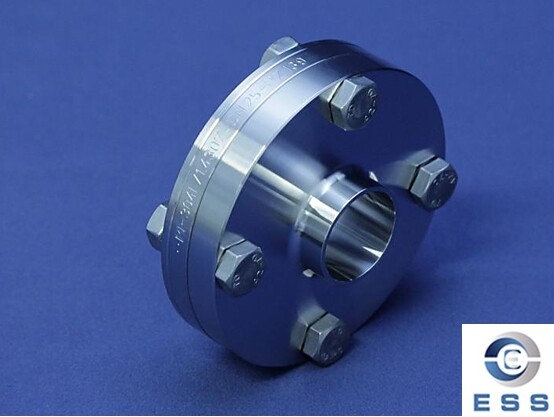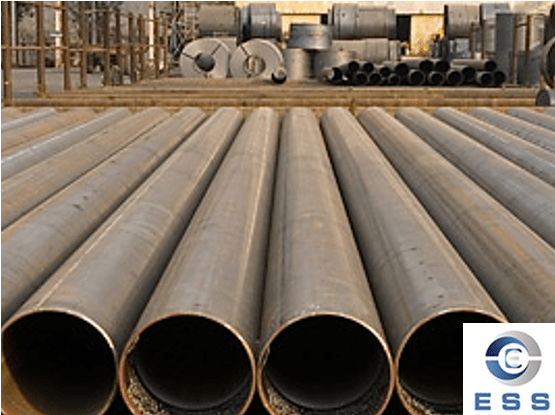
In the industrial field, stainless steel flanges are key
pipe connectors, and their quality is directly related to the stability and
safety of the entire system. Therefore, it is crucial to find a reliable
stainless steel flange
supplier. The following are specific steps and suggestions:
Clear requirements
1. Material requirements
Common stainless steel grades are as
follows:
304 (ASTM A182 F304)-general-purpose
stainless steel with good corrosion resistance and mechanical properties,
suitable for most industrial environments.
316/L (ASTM A182 F316)-stronger corrosion
resistance, especially suitable for chemical and marine environments with high
corrosion resistance requirements.
Duplex steel (2205, in accordance with ASTM
A182 F51)-high strength and good corrosion resistance, suitable for special
environments requiring high strength and corrosion resistance.
You can verify by asking the supplier to
provide a material certificate (MTC) and a third-party test report (such as
SGS) to ensure that the material of the purchased product meets the
requirements.
2. Specifications
Pressure level: usually divided into Class
150~2500 (ASME B16.5) or PN6~PN100 (EN 1092-1), select the appropriate pressure
level according to the specific application scenario.
Connection form: including butt welding
(WN), blind flange (BL), thread (TH), etc., which needs to be determined
according to the pipeline connection method.
Surface treatment: common pickling and
sandblasting should comply with ASTM A380 standard to ensure the surface
quality of the flange.
3. Target market
According to the requirements of the target
market, ensure that the supplier can provide the corresponding mandatory
certification:
EU market: CE certification (must comply
with PED 2014/68/EU directive).
North American market: ASME BPV Code
Section VIII (pressure vessel certification).
Middle East/Southeast Asia: ISO 9001 and
third-party factory inspection report (if applicable to oil and gas projects).
Reliable channels for screening
international suppliers
1. ThomasNet (USA)
You can screen ASME certified companies and
check customer reviews to evaluate supplier reliability.
2. EUROPAGES (Europe)
You can filter by CE/PED certification to
find compliant suppliers that meet EU standards.
3. TradeIndia/Alibaba.com
For Asian suppliers (India, Vietnam, etc.),
pay attention to the "Verified Supplier" label to identify
high-quality suppliers.
Core indicators for evaluating suppliers
1. Compliance documents
Required documents: business license, ISO
9001, CE/ASME certificate (depending on the target market).
Additional documents: NACE MR0175
(anti-hydrogen sulfide corrosion certification, suitable for oil and gas
projects).
2. Equipment requirements
Forging equipment: Closed-Die Forging is
better than Open-Die forging, which can provide more accurate dimensions and
better mechanical properties.
Processing equipment: CNC machine tools can
ensure that the flange hole distance accuracy reaches ±0.1mm
to ensure assembly accuracy.
3. Testing capabilities
Spectral analysis (PMI testing): used to
verify the content of key elements such as Cr, Ni, Mo, etc. in the material to
ensure that the material meets the standards.
Hydrostatic test: Performed in accordance
with ASME B16.5 standard, to test the sealing performance and strength of the
flange under the specified pressure.
4. Sample and batch consistency
Required to provide PPAP: Production Part
Approval Process Document, including dimensional report, material
certification, etc., to evaluate the quality of the sample.
Small batch trial order: Through a small
batch trial order of 10~50 pieces, verify the supplier's production stability
and batch product quality consistency.
5. Delivery and logistics capabilities
Delivery cycle: Understand the delivery
cycle of suppliers in different regions, such as EU/US factories usually 4~8
weeks, Asian factories 2~4 weeks, and reserve enough time for sea
transportation.
Logistics terms: Clarify logistics terms
such as FOB/CIF/DDP, and give priority to suppliers with rich international
freight experience to ensure that the goods can arrive at the destination on
time and safely.
Summary
In short, through the above steps and
suggestions, taking into account product quality, qualification certification,
industry reputation and service capabilities and other factors, you can find a
reliable stainless steel flange supplier to provide guarantee for the smooth
progress of industrial projects.













 Eastern Steel Manufacturing Co.,Ltd not only improve product production and sales services, but also provide additional value-added services. As long as you need, we can complete your specific needs together.
Eastern Steel Manufacturing Co.,Ltd not only improve product production and sales services, but also provide additional value-added services. As long as you need, we can complete your specific needs together.










